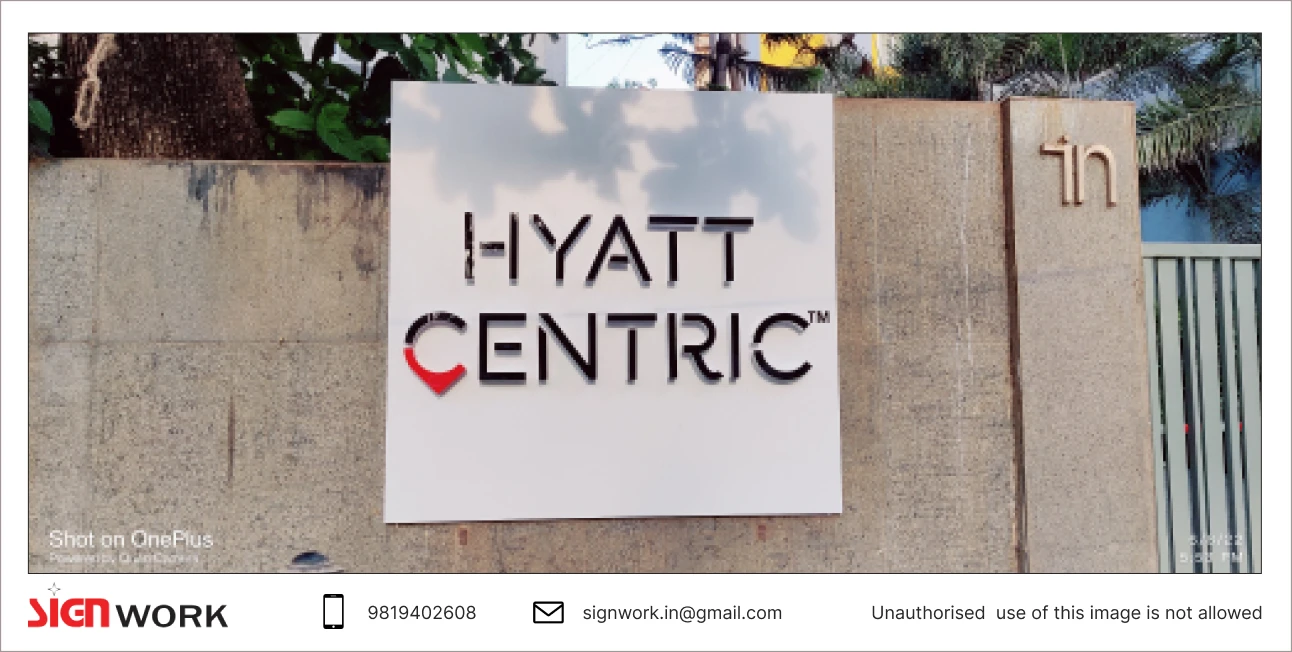
Sign Board Companies In Mumbai
Mumbai's leading sign board companies: Elevate your brand with creative, high-quality signage. Find your perfect match now.

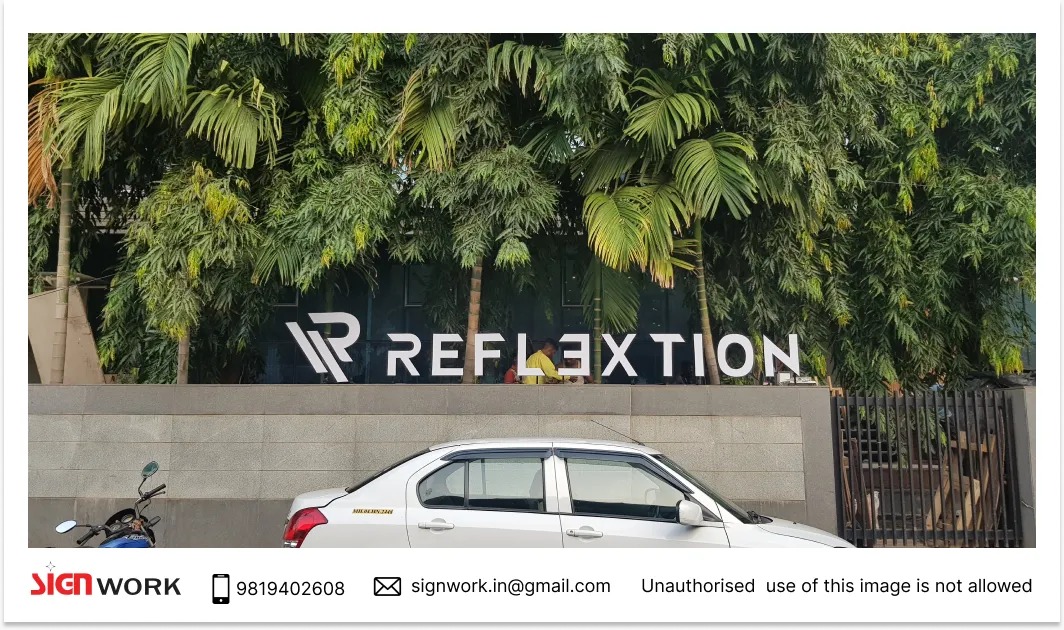
Disadvantages of Signboards
Signboards have long played a significant role in modern society, serving as effective tools for conveying information, promoting businesses, and guiding people. However, like any tool, they come with their own set of disadvantages that need to be acknowledged and addressed. As we explore the potential downsides of signboards, it becomes evident that finding a balance between effective communication and visual clutter is essential.
1. Visual Pollution: One of the most prominent disadvantages of signboards is their contribution to visual pollution. Overabundance of signboards in urban areas can lead to a cluttered and chaotic visual landscape, detracting from the aesthetic appeal of the environment. This visual clutter can make it difficult for pedestrians and drivers to navigate and enjoy their surroundings, potentially leading to a sense of overwhelm and discomfort.
2. Distraction and Safety Concerns: Signboards, especially those with flashy designs or bright lights, can be major distractions for drivers on the road. When drivers divert their attention to reading a signboard, their focus on the road diminishes, increasing the risk of accidents. This is particularly concerning in high-traffic areas where split-second decisions can have severe consequences.
3. Information Overload: The presence of numerous signboards in a single area can lead to information overload for individuals trying to process the information presented. When too many messages compete for attention, the effectiveness of each signboard decreases, potentially rendering them ineffective in conveying their intended message.
4. Cluttered Aesthetics: While signboards are intended to communicate essential information, their presence can often clash with the aesthetic and architectural character of a location. Historical or culturally significant areas can lose their authenticity and charm when covered in a sea of signboards that disrupt the visual harmony of the surroundings.
5. Environmental Impact: The production, installation, and maintenance of signboards can contribute to environmental degradation. Materials used in signboards, such as plastics and metals, can have adverse effects on the environment, particularly when they are not disposed of properly. Additionally, the energy consumption of illuminated signboards can contribute to higher energy consumption and greenhouse gas emissions.
6. Negative Psychological Impact: Constant exposure to aggressive advertising on signboards can create a sense of consumerism and materialism that negatively impacts individuals' mental well-being. The pressure to constantly buy and consume can lead to dissatisfaction, stress, and a sense of inadequacy.
7. Impaired Urban Planning: The proliferation of signboards without proper regulations can lead to haphazard urban planning and zoning. Uncontrolled placement of signboards can disrupt the natural flow of traffic, overshadow architectural features, and hinder effective urban development.
8. Economic Disparities: High advertising costs associated with prominent signboard placements can contribute to economic disparities among businesses. Larger corporations with bigger budgets can dominate prime advertising spaces, while smaller businesses struggle to compete, potentially leading to an uneven business playing field.
Balancing Act: Mitigating the Disadvantages: While the disadvantages of signboards are significant, they can be mitigated through thoughtful urban planning, effective regulations, and conscious consumer choices. Implementing zoning laws that regulate signboard placement, size, and design can help maintain a harmonious visual landscape. Moreover, promoting digital signage solutions can reduce the environmental impact associated with traditional signboards.
Consumers also play a role by supporting businesses that opt for responsible advertising practices and minimalist designs that enhance the environment rather than overwhelm it. Additionally, technology can aid in addressing some of the drawbacks; for instance, dynamic digital signboards can display multiple messages within the same space, reducing visual clutter.
In conclusion, signboards are powerful communication tools that have transformed the way we interact with our environment and make purchasing decisions. However, their disadvantages, including visual pollution, distraction, and environmental impact, cannot be ignored. By striking a balance between effective communication and mindful aesthetics, we can harness the benefits of signboards while mitigating their downsides and creating more harmonious urban spaces.
In conclusion,
Best Sign Board Companies in Mumbai serve as essential elements of urban infrastructure that contribute to the city's organization, safety, and aesthetics. They aid in navigation, regulate traffic, ensure public safety, identify businesses, promote cultural heritage, facilitate public transportation, beautify the city, and communicate vital information. Without these
Affordable Sign Board Companies Mumbai's urban life would be chaotic and challenging, making them an integral and irreplaceable part of the city's fabric.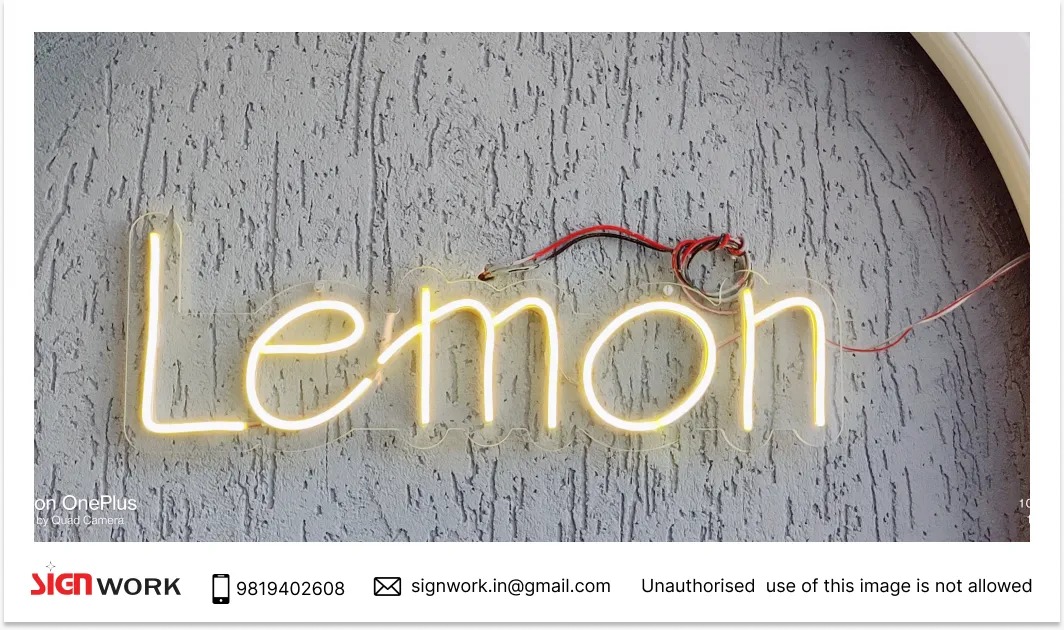
15 Benefits of Custom Metal Signage for Branding and Promotions
In the competitive business landscape of today, effective branding and promotions are essential for success. One powerful tool that businesses can leverage is custom metal signage. Custom metal signs offer a unique and eye-catching way to represent a brand, communicate messages, and attract potential customers. In this article, we will explore 15 benefits of using custom metal signage for branding and promotions.
Versatility in Design: With custom metal signage, businesses have the freedom to design unique shapes, sizes, and finishes. This allows them to create a sign that perfectly reflects their brand's personality and values.
Enhanced Brand Visibility: Custom metal signage can be strategically placed in high-traffic areas to increase brand visibility. When designed creatively, these signs become memorable landmarks, guiding customers to the business.
Professional and High-End Image: Metal signs exude a sense of professionalism and sophistication. This perception can positively impact a brand's image, positioning it as a high-end and reputable business.
Easy Maintenance: Metal signs are easy to clean and maintain, requiring minimal effort and cost. This makes them a practical and cost-effective choice for long-term use.
Weather Resistance: Metal signs are highly resistant to harsh weather conditions such as rain, snow, and UV exposure. This resilience ensures that the sign remains attractive and readable over time.
Indoor and Outdoor Use: Custom metal signage is versatile enough to be used both indoors and outdoors. This flexibility allows businesses to maintain consistent branding across different locations.
Customizable Finishes: Metal signs can be finished with various techniques, including powder coating, brushed metal, or anodizing. This Customization enhances the sign's appearance and aligns with the brand's aesthetics.
Eco-Friendly Option: Metal is a sustainable and eco-friendly material choice for signage. It can be recycled, making it an environmentally conscious option for businesses.
Increased Perceived Value: Customers often associate metal signs with high-quality products and services. Using custom metal signage can boost the perceived value of a brand, potentially leading to increased customer trust and loyalty.
Cost-Effective Advertising: Custom metal signage is a one-time investment that offers long-term advertising benefits. Compared to other forms of advertising, metal signs provide excellent return on investment (ROI).
Brand Consistency: Custom metal signage allows businesses to maintain consistent branding throughout their locations. This brand consistency fosters brand recognition and reinforces the company's message.
Effective Communication: Metal signs can be customized to display various messages, including promotions, sales, and special offers. Their visibility and durability ensure that the messages reach the target audience effectively.
Customizable Sizes: From small directional signs to large outdoor billboards, custom metal signage can be tailored to suit specific needs and spaces. This adaptability makes it suitable for businesses of all sizes.
Durability and Longevity: Custom metal signage is highly durable and built to withstand various weather conditions. Unlike other materials, metal signs are less likely to fade, crack, or warp, ensuring a long-lasting investment.
Distinctive and Eye-Catching: Metal signs have a distinct appearance that sets them apart from traditional signage options. Their shiny surface and elegant design can attract attention and leave a lasting impression on passersby.
Conclusion:
Custom metal signage offers numerous benefits for branding and promotions, making it an ideal choice for businesses seeking a durable, eye-catching, and versatile advertising solution. Its distinct appearance, professional image, and ease of customization make it an effective tool for increasing brand visibility, attracting customers, and creating a lasting impression. By investing in custom metal signage, businesses can elevate their branding efforts and enjoy long-term market
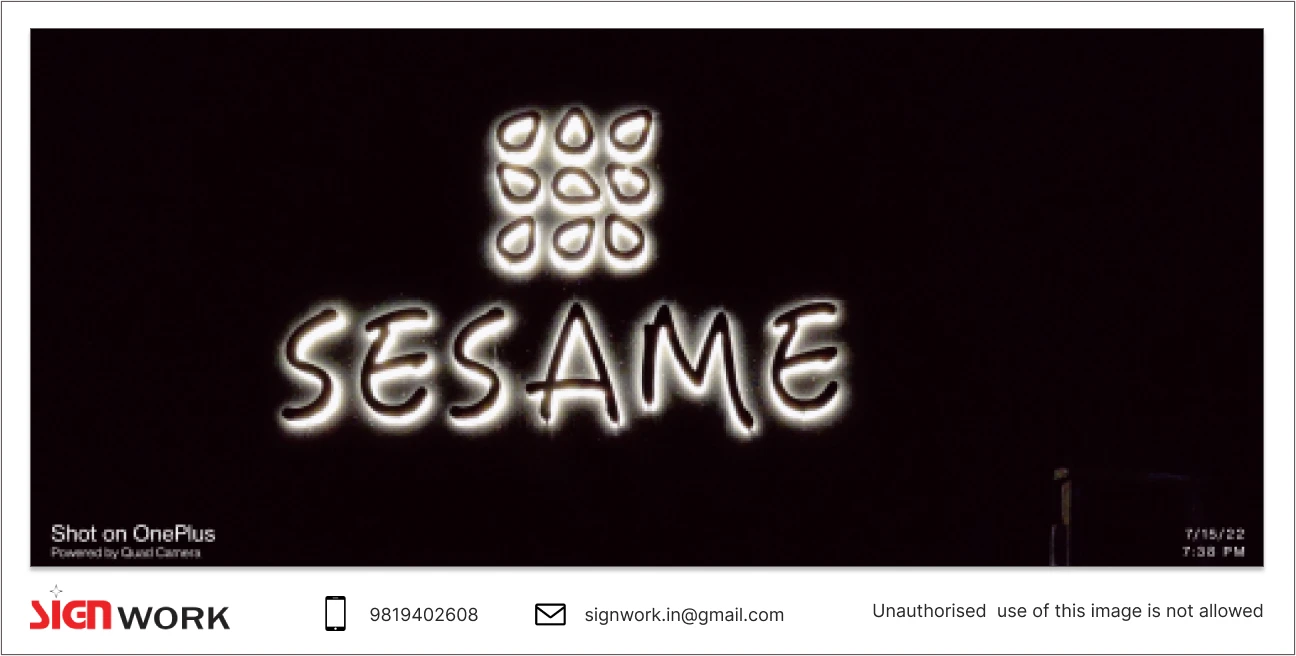
How to Design Effective Signage for Your Business
Before you start designing your signage, it's essential to understand your target audience and the goals you want to achieve. Different businesses cater to different demographics, and your signage should align with the preferences and interests of your ideal customers. Determine whether you want to increase foot traffic, promote a specific product, or create brand awareness. Understanding these objectives will guide you in crafting a clear and compelling message.
In the world of signage, simplicity is king. Your sign should be easy to read and understand at a glance. Avoid clutter and excessive wording, as it can overwhelm viewers and dilute the message. Choose a clear and legible font, ensuring it is large enough to be seen from a distance. Contrast is crucial—use colors that stand out from the background, making the text highly visible.
Your signage should be an extension of your brand identity. Incorporate your logo, brand colors, and any unique brand elements to reinforce brand recognition. Consistency in branding across all touchpoints creates a strong brand image, making it easier for customers to remember and recognize your business.
The placement of your signage can significantly impact its effectiveness. Consider the visibility from different angles and distances. High-traffic areas or spots where people tend to linger (e.g., near the entrance or checkout counter) are ideal locations for maximum exposure. Additionally, take into account local regulations and permits for outdoor signage, if applicable.
Invest in durable and high-quality materials that can withstand various weather conditions if your signage is outdoor. Indoor signage should also be well-crafted, as it reflects the professionalism and quality of your business. Quality materials will ensure that your signage remains in top shape for an extended period, saving you money in the long run.
Don't be afraid to be creative with your design to capture attention and stand out from competitors. Incorporate eye-catching graphics, compelling images, or witty slogans that resonate with your target audience. A memorable sign will leave a lasting impression and potentially lead to word-of-mouth marketing.
Include a clear and concise call-to-action in your signage. Whether it's "Visit Us Today," "Limited Time Offer," or "Call Now," a compelling CTA prompts potential customers to take immediate action. Be specific and direct, encouraging them to engage with your business right away.
Designing effective signage is an ongoing process. Don't be afraid to test different variations and gather feedback from customers and employees. A/B testing can help you identify what works best and continuously improve your signage's impact.
Regularly inspect and maintain your signage to ensure it remains in excellent condition. Faded or damaged signs can give a negative impression of your business. Furthermore, update your signage when needed to reflect changes in your business, promotions, or branding updates.
Finally, measure the impact of your signage efforts. Track foot traffic, sales, and customer feedback to gauge the effectiveness of your signage. This data will help you make informed decisions and refine your approach over time.
In conclusion, effective signage is a powerful marketing tool that can enhance your business's visibility and growth. By understanding your audience, keeping it simple yet impactful, and incorporating your brand identity, you can create signage that leaves a positive and lasting impression on your target customers. With careful planning, creativity, and attention to detail, your signage can become a valuable asset in attracting and retaining customers for your business.
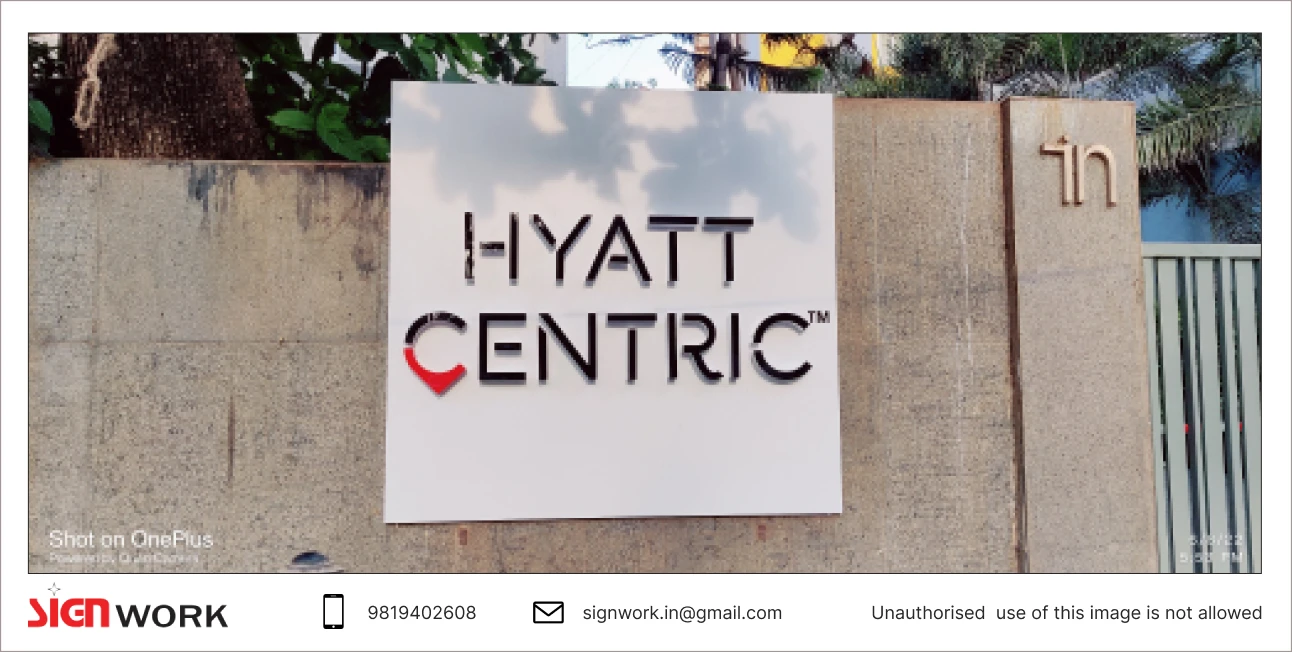
Technology Used for Signboards
Digital signage is one of the most prominent and versatile technologies used for modern signboards. These displays utilize LCD, LED, or OLED screens to present dynamic content, including images, videos, animations, and live updates. The flexibility of digital signage allows businesses to change messages and promotions in real-time, target specific demographics, and create engaging experiences that resonate with customers. Digital signage is widely used in retail stores, restaurants, airports, hotels, and various other public spaces.
Light Emitting Diode (LED) technology has revolutionized signboards, offering energy-efficient and eye-catching displays. LED signs provide vivid colors, high contrast, and enhanced visibility, making them ideal for both indoor and outdoor applications. They consume less power than traditional lighting sources, reducing operational costs and contributing to environmental sustainability. LED technology has enabled the creation of eye-catching and attention-grabbing displays that enhance brand visibility and customer engagement.
Interactive signboards have gained popularity due to their ability to captivate and engage customers. Touchscreen displays allow users to interact directly with the content, providing a more personalized and immersive experience. Interactive signboards are commonly used in retail settings to showcase products, provide product information, and even enable customers to place orders directly from the display. Such technology encourages customer participation, promotes brand loyalty, and facilitates data collection for businesses.
Augmented Reality (AR) technology is transforming signboards into interactive and captivating experiences. By overlaying digital elements onto the real-world environment, AR signboards provide users with additional information, virtual try-ons, and interactive games. AR signboards are particularly effective in advertising campaigns, product launches, and experiential marketing initiatives, creating memorable and shareable moments for customers.
The Internet of Things (IoT) has paved the way for smart and connected signboards. IoT-enabled signboards can collect and process real-time data, enabling dynamic content updates based on various factors such as weather, foot traffic, or customer behavior. For example, a smart signboard in a retail store can display targeted promotions based on the products customers browse or purchase. IoT integration enhances the relevance and effectiveness of signboard communication.
Projection mapping is a technology that allows signboards to transform ordinary surfaces into dynamic and visually stunning displays. By projecting images and videos onto irregularly shaped surfaces, signboards can create a sense of depth and movement, captivating viewers and leaving a lasting impression. Projection mapping is commonly used in events, art installations, and experiential marketing campaigns.
Artificial Intelligence (AI) is being utilized to enhance signboard communication through data-driven insights and personalization. AI algorithms can analyze customer behavior and preferences, enabling businesses to deliver targeted and relevant content. AI-powered signboards can dynamically adjust content based on factors such as the time of day, location, and customer demographics, maximizing engagement and impact.
Mobile integration has become an integral part of signboard technology. QR codes and NFC (Near Field Communication) tags on signboards allow users to interact with the display using their smartphones. Scanning QR codes can direct customers to websites, social media pages, or provide exclusive offers, seamlessly bridging the gap between offline and online experiences.
conclusion:
Technology has transformed signboards from static displays to dynamic, interactive, and engaging communication tools. Digital signage, LED technology, interactive displays, AR, IoT, projection mapping, AI, and mobile integration are some of the key innovations shaping the future of signboards. Businesses that embrace these technologies can create compelling signboard experiences, effectively communicate their messages, and stay ahead in a highly competitive market.
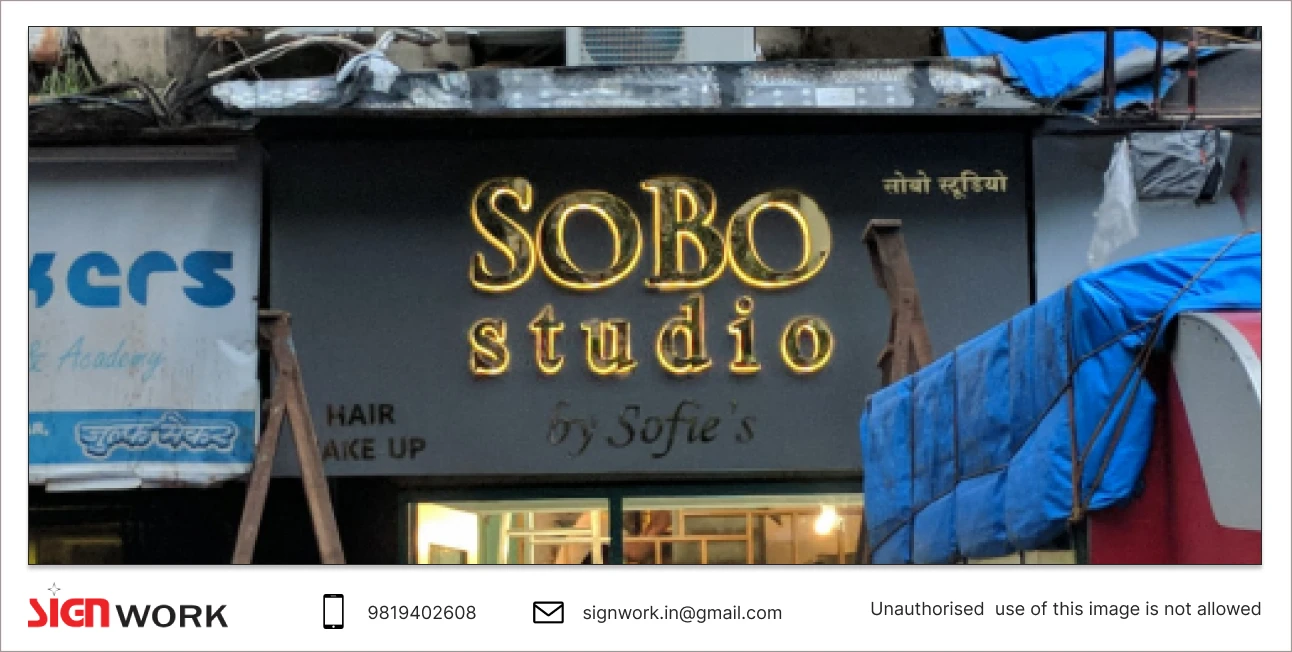
The Significance of Signboard Objectives
The primary purpose of a signboard is to communicate effectively with the target audience. Whether it's directing people to a location, displaying product information, or promoting a special offer, clear and concise messaging is essential. Signboard objectives should be focused on delivering the intended message in a way that is easy to understand and memorable.
Signboards are valuable assets for building brand visibility and recognition. Consistent branding elements, such as logos, colors, and fonts, help create a cohesive brand identity. When people see a signboard that aligns with a familiar brand, it reinforces their connection with the business. Signboard objectives should aim to strengthen brand recognition and leave a lasting impression on potential customers.
An attractive and well-placed signboard can act as a magnet for customers, drawing them into the business premises. Whether it's a storefront sign, a roadside billboard, or a digital display, signboard objectives should focus on capturing attention and enticing passersby to explore what the business has to offer. A compelling signboard can significantly increase foot traffic and potential leads.
Signboards provide an excellent platform for promoting products, services, and special offers. By setting clear promotional objectives, businesses can use signboards to announce sales, discounts, new product launches, or upcoming events. Effective promotional signboards can create a sense of urgency and encourage immediate action from customers.
Signboards can contribute to enhancing the overall customer experience. Wayfinding signboards in large establishments or public spaces help customers navigate easily, reducing confusion and frustration. Interactive signboards can engage customers and provide them with valuable information, creating a positive impression of the business.
In competitive markets, signboards can be a powerful tool for standing out from the competition. Signboard objectives should focus on differentiating the business and highlighting its unique selling points. Whether it's exceptional customer service, eco-friendly practices, or exclusive products, signboards can communicate these advantages to potential customers.
A well-crafted signboard objective can include a clear call-to-action (CTA) that directs customers to take a specific action, such as making a purchase, signing up for a newsletter, or visiting a website. By guiding customers towards the desired action, signboards can contribute to increasing conversions and driving business growth.
For certain businesses, signboards are essential for compliance and safety purposes. Regulatory signboards, such as fire exit signs, no-smoking signs, or safety instructions, ensure that the business adheres to legal requirements and prioritizes the safety of employees and customers.
In conclusion, the significance of signboard objectives cannot be overstated. They are the foundation of effective communication, brand visibility, and achieving business goals. By setting clear objectives, businesses can leverage signboards as powerful tools for attracting customers, promoting products, enhancing the customer experience, and gaining a competitive advantage. Whether it's a traditional static signboard or a cutting-edge digital display, a well-defined signboard objective can make all the difference in successfully reaching and engaging the target audience.
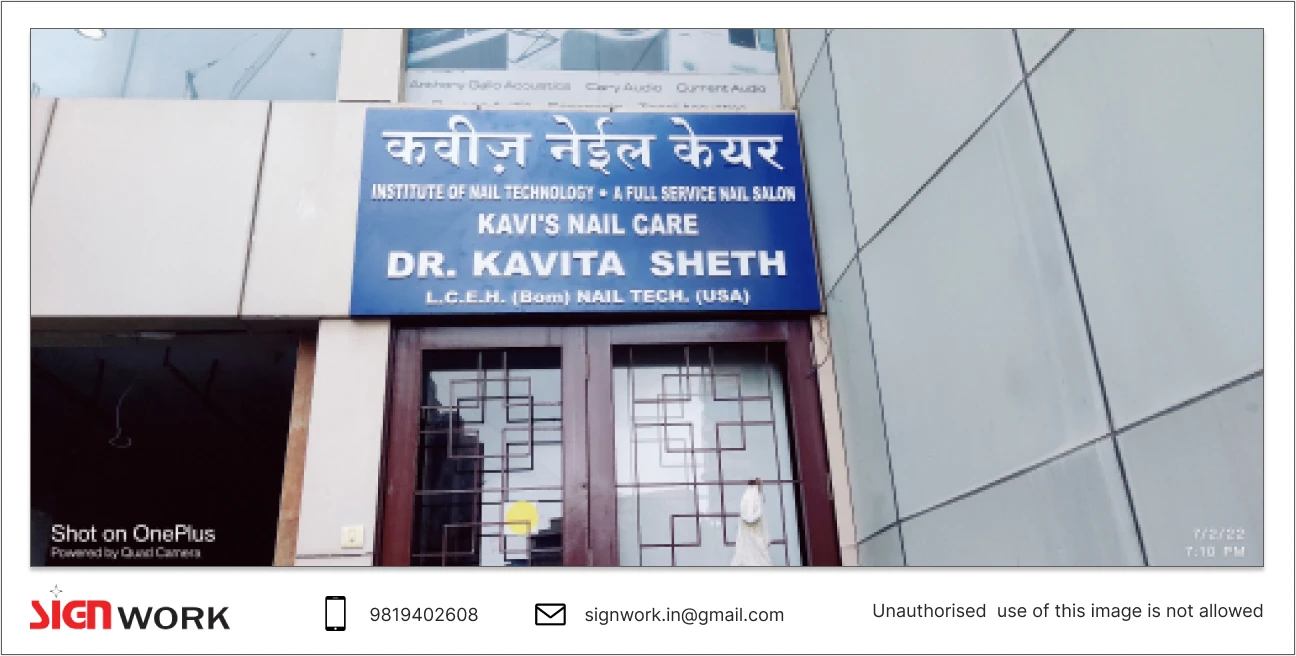
Service and Maintenance on Sign Board
conclusion,
service and maintenance are essential for keeping sign boards effective and visually appealing. By investing in regular upkeep, businesses can preserve their brand image, ensure safety, and maximize the impact of their sign boards. Remember to conduct visual inspections, clean regularly, protect from weather, and promptly address any issues that arise. By taking care of your sign boards, you are making a long-term investment in the success and visibility of your business.
The Future of Signboards: Embracing Innovation and Digital Transformation
Digital signage is already a significant player in the world of signboards, and its prominence will only continue to grow. The future holds even more sophisticated and interactive digital displays, capable of delivering real-time dynamic content. These displays will use advanced data analytics and AI algorithms to tailor messages and promotions to specific audiences, locations, and even individual preferences. Personalized content will enhance customer experiences, increase engagement, and drive conversions.
Augmented Reality (AR) is on the rise, and it is expected to play a pivotal role in the future of signboards. AR signboards will offer immersive experiences, overlaying digital elements onto the real world to captivate and engage audiences. Customers will be able to interact with products, try on virtual samples, and experience lifelike scenarios through AR signboards. This technology will blur the lines between the physical and digital realms, opening up a world of possibilities for marketing and storytelling.
The Internet of Things (IoT) will enable smart and connected signboards that gather and process real-time data. IoT integration will allow signboards to adapt to changing conditions and customer behaviors. For example, outdoor signboards might adjust their content based on weather conditions or foot traffic, while indoor signboards could respond to customer gestures and preferences. IoT-enabled signboards will be more relevant, context-aware, and efficient in communicating with audiences.
Transparent OLED displays are an exciting development in signboard technology. These displays offer the unique ability to show content while allowing visibility through the screen. This feature opens up new opportunities for creative and interactive signboard designs, such as interactive storefronts that display information while still allowing customers to see the products inside. Transparent OLED signboards will create a futuristic and captivating visual experience.
As technology advances, signboards will become more intuitive and user-friendly. Gesture and voice control will replace traditional touch interactions, enabling users to interact with signboards without physically touching the screen. Customers will be able to navigate through content, make selections, and access information simply by using hand gestures or voice commands. This touchless interaction will contribute to a safer and more hygienic customer experience.
Holographic displays are another futuristic innovation that will impact the future of signboards. Holographic signboards create three-dimensional images that appear to float in space, offering a mesmerizing and attention-grabbing effect. These displays will be especially effective for advertising and promotional campaigns, making messages stand out in crowded environments.
Advancements in display technology will lead to the development of flexible and bendable displays for signboards. These displays can be molded into various shapes and can be integrated into unconventional surfaces, such as curved walls or pillars. Flexible signboards will offer greater design freedom and open up new possibilities for creative and engaging displays.
The future of signboards will also prioritize sustainability and energy efficiency. Advancements in LED and display technology will result in more eco-friendly and energy-efficient signboards. Solar-powered signboards and displays with low power consumption will reduce the environmental impact while ensuring continuous operation.
In conclusion, the future of signboards is an exciting fusion of technology, creativity, and innovation. Digital signage, augmented reality, IoT integration, transparent OLED displays, gesture and voice control, holographic displays, flexible displays, and sustainability are some of the key trends shaping the future of signboards. Businesses that embrace these advancements will have the opportunity to create more impactful, engaging, and personalized signboard experiences, setting new standards for effective communication and customer engagement in the years to come. As the world becomes more interconnected and technologically advanced, signboards will continue to play a vital role in shaping the way businesses interact with their audiences.
Technology Used for Signboards: Advancements Shaping Effective Communication
Digital Signage
Digital signage is one of the most prominent and versatile technologies used for modern signboards. It involves the use of LCD, LED, or OLED screens to display dynamic content, such as images, videos, animations, and live updates. Digital signage allows businesses to change messages and promotions in real-time, target specific demographics, and create engaging experiences that capture the attention of passersby. This technology is widely used in retail stores, restaurants, airports, hotels, and various other public spaces.
LED Technology
LED (Light Emitting Diode) technology has revolutionized signboards by offering energy-efficient and eye-catching displays. LED signs provide vivid colors, high contrast, and enhanced visibility, making them ideal for both indoor and outdoor applications. They consume less power than traditional lighting sources, resulting in lower operational costs and environmental benefits. LED technology has enabled the creation of eye-catching and attention-grabbing displays that enhance brand visibility and customer engagement.
Touchscreen and Interactive Displays
Interactive signboards have gained popularity due to their ability to captivate and engage customers. Touchscreen displays allow users to interact directly with the content, providing a more personalized and immersive experience. Businesses use interactive signboards in retail settings to showcase products, provide product information, and even enable customers to place orders directly from the display. This technology encourages customer participation, promotes brand loyalty, and facilitates data collection for businesses.
Augmented Reality (AR)
Augmented Reality (AR) technology is transforming signboards into interactive and captivating experiences. AR overlays digital elements onto the real-world environment, providing users with additional information, virtual try-ons, and interactive games. AR signboards are particularly effective in advertising campaigns, product launches, and experiential marketing initiatives, creating memorable and shareable moments for customers.
Internet of Things (IoT)
The Internet of Things (IoT) has paved the way for smart and connected signboards. IoT-enabled signboards can collect and process real-time data, enabling dynamic content updates based on factors like weather, foot traffic, or customer behavior. For example, a smart signboard in a retail store can display targeted promotions based on the products customers browse or purchase. IoT integration enhances the relevance and effectiveness of signboard communication.
Projection Mapping
Projection mapping is a technology that allows signboards to transform ordinary surfaces into dynamic and visually stunning displays. By projecting images and videos onto irregularly shaped surfaces, signboards can create a sense of depth and movement, captivating viewers and leaving a lasting impression. Projection mapping is commonly used in events, art installations, and experiential marketing campaigns.
Artificial Intelligence (AI)
Artificial Intelligence (AI) is being utilized to enhance signboard communication through data-driven insights and personalization. AI algorithms can analyze customer behavior and preferences, enabling businesses to deliver targeted and relevant content. AI-powered signboards can dynamically adjust content based on factors such as the time of day, location, and customer demographics, maximizing engagement and impact.
Mobile Integration and QR Codes
Mobile integration has become an integral part of signboard technology. QR codes and NFC (Near Field Communication) tags on signboards allow users to interact with the display using their smartphones. Scanning QR codes can direct customers to websites, social media pages, or provide exclusive offers, seamlessly bridging the gap between offline and online experiences.
In conclusion, technology has played a pivotal role in shaping the evolution of signboards. Digital signage, LED technology, interactive displays, AR, IoT, projection mapping, AI, and mobile integration are some of the key innovations that have transformed signboards into powerful communication tools. Businesses that embrace these technologies can create compelling signboard experiences, effectively communicate their messages, and stay ahead in a competitive market. As technology continues to advance, we can expect even more exciting developments in signboard technology, further enhancing communication and engagement with audiences.
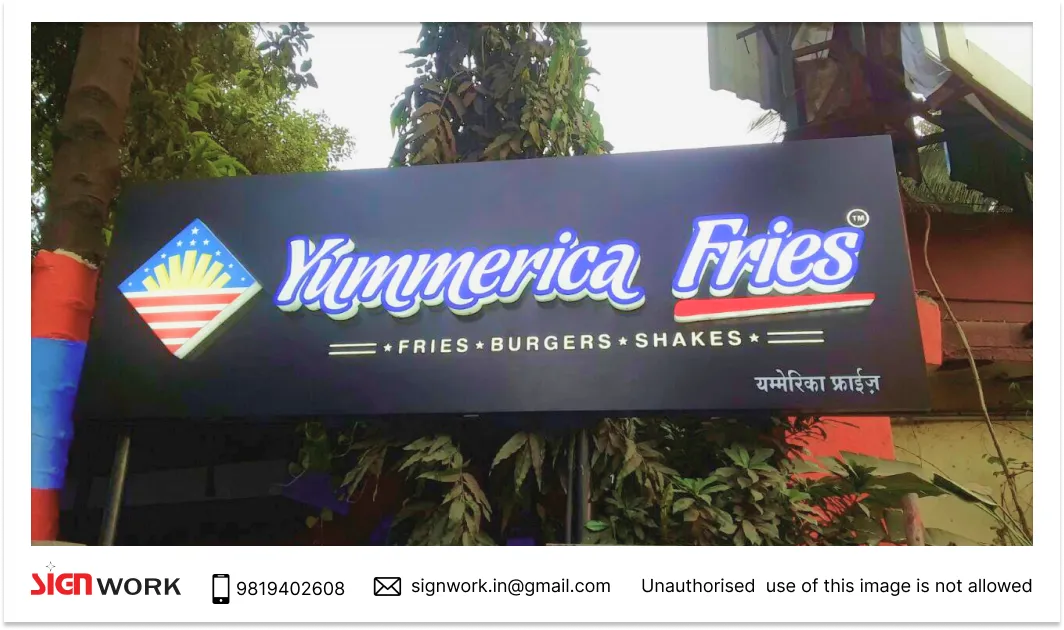
Contact Us - Signwork
Thank you for visiting Signwork! We are thrilled to have you here and value your engagement with our content. If you have any questions, suggestions, or would like to connect with us, we invite you to reach out through the following channels:
Phone: +91 9819402608
Email: signwork.in@gmail.com
Your feedback is essential to us, and we are always eager to hear from our readers. Whether you want to share your thoughts on a specific article, propose collaboration opportunities, or discuss anything related to Signwork, we're here to listen and respond.
At Signwork, we are committed to delivering valuable and informative content to our audience, and your input plays a crucial role in shaping our future endeavors.
Feel free to drop us a line, and we'll make sure to get back to you promptly. Thank you for being a part of the Signwork community, and we look forward to connecting with you!

Mumbai's leading sign board companies: Elevate your brand with creative, high-quality signage. Find your perfect match now.
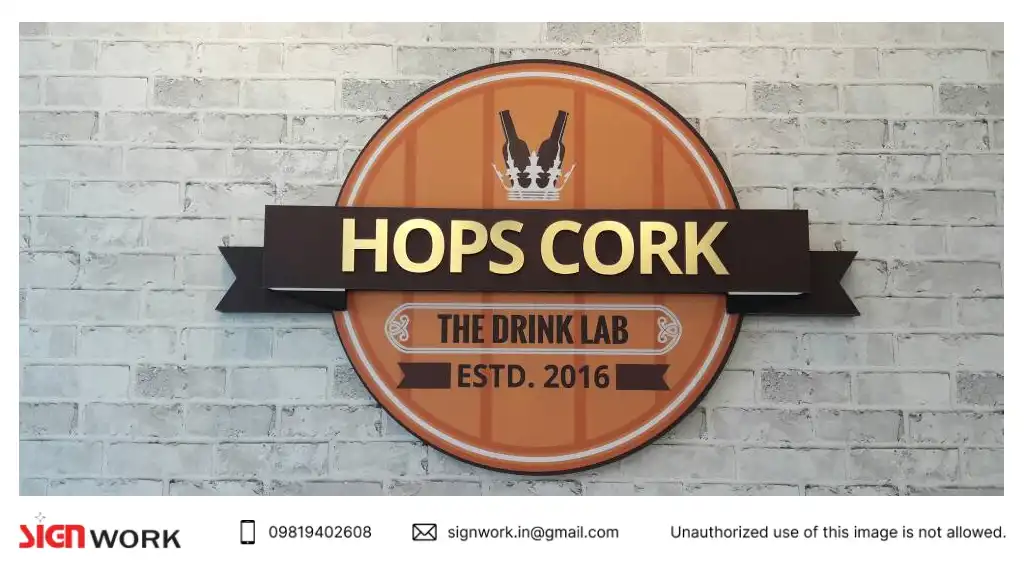
Unlock the magic of sign board manufacturing in Mumbai! From stunning metal sign boards to innovative solutions, find top-quality services at one destination.